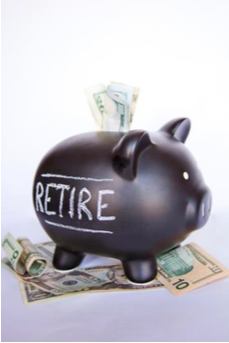151
Older adults are just as capable as younger adults at the workplace. In fact, jobs that require social skills, accumulated knowledge, and relevant experiences favour older adults (Erber & Szuchman, 2015). Older adults also demonstrate lower rates of absenteeism and greater investment in their work. In 2022, almost a million Canadians aged 65 and older were active in the labour force (Statista, 2024).
Transitioning into Retirement: For most, retirement is a process and not a one-time event (Quinn & Cahill, 2016). Sixty percent of workers transition straight to bridge jobs, which are often part-time, and occur between a career and full retirement. About 15% of workers get another job after being fully retired. This may be due to not having adequate finances after retirement or not enjoying their retirement. Some of these jobs may be in encore careers, or work in a different field from the one in which they retired. Approximately 10% of workers begin phasing into retirement by reducing their hours. However, not all employers will allow this due to pension regulations.
Retirement age changes: Looking at retirement data, the average age of retirement declined from more than 70 in 1910 to age 63 in the early 1980s. However, this trend has reversed and the current average age is now 65. Additionally, 18.5% of those over the age of 65 continue to work (US Department of Health and Human Services, 2012) compared with only 12% in 1990 (U. S. Government Accountability Office, 2011). With individuals living longer, once retired the average amount of time a retired worker collects social security is approximately 17-18 years (James, Matz-Costa, & Smyer, 2016).

Delayed Retirement: Older adults primarily choose to delay retirement due to economic reasons (Erber & Szchman, 2015). Financially, continuing to work provides not only added income, but also does not dip into retirement savings which may not be sufficient. Historically, there have been three parts to retirement income; that is, social security, a pension plan, and individual savings (Quinn & Cahill, 2016). With the 2008 recession, pension plans lost value for most workers. Consequently, many older workers have had to work later in life to compensate for absent or minimal pension plans and personal savings. Social security was never intended to replace full income, and the benefits provided may not cover all the expenses, so elders continue to work. Unfortunately, many older individuals are unable to secure later employment, and those especially vulnerable include persons with disabilities, single women, the oldest- old, and individuals with intermittent work histories.
Some older adults delay retirement for psychological reasons, such as health benefits and social contacts. Recent research indicates that delaying retirement has been associated with helping one live longer. When looking at both healthy and unhealthy retirees, a one-year delay in retiring was associated with a decreased risk of death from all causes (Wu, Odden, Fisher, & Stawski, 2016). When individuals are forced to retire due to health concerns or downsizing, they are more likely to have negative physical and psychological consequences (Erber & Szuchman, 2015).
Retirement Stages: Atchley (1994) identified several phases that individuals ago through when they retire:
- Remote pre-retirement phase includes fantasizing about what one wants to do in retirement.
- Immediate pre-retirement phase when concrete plans are established.
- Actual retirement
- Honeymoon phase when retirees travel and participate in activities they could not do while working./li>
- Disenchantment phase when retirees experience an emotional let-down.
- Reorientation phase when the retirees attempt to adjust to retirement by making less hectic plans and getting into a regular routine.
Not everyone goes through every stage, but this model demonstrates that retirement is a process.

Post-retirement: Those who look most forward to retirement and have plans are those who anticipate adequate income (Erber & Szuchman, 2015). This is especially true for males who have worked consistently and have a pension and/or adequate savings. Once retired, staying active and socially engaged is important. Volunteering, caregiving and informal helping can keep seniors engaged. Kaskie, Imhof, Cavanaugh and Culp (2008) found that 70% of retirees who are not involved in productive activities spent most of their time watching TV, which is correlated with negative affect. In contrast, being productive improves well-being.

